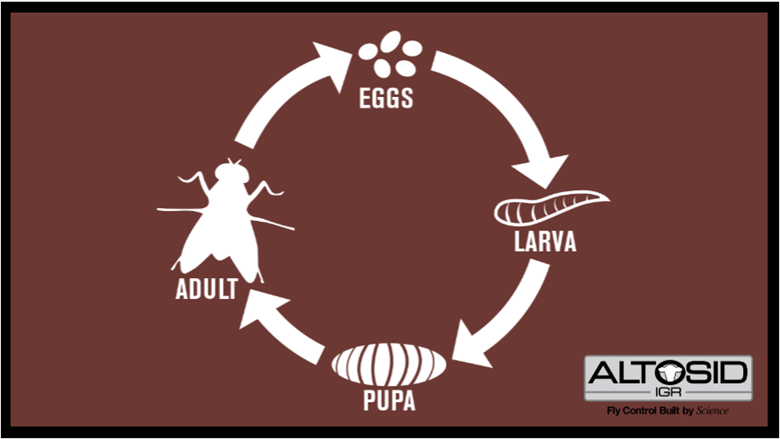
While it is an often-overlooked issue, beef producers need to be observant for cattle infections such as beef heifer mastitis in their herd. Infections not only impact current cattle productivity, they can impact the long-term herd profitability.
Infections in beef heifers can lead to lower cow conception rates during the narrow windows of time available to conceive. In fact, studies have confirmed that cows with mastitis can take up to 25% longer to conceive. In addition to lower cow conception rates, teat and udder infections cause scar tissue and severely limit milk production and impact calf weaning weights. Without maximizing the useful life of a cow, operations may have to invest in costly replacement heifers sooner than otherwise necessary.
The Role of Horn Flies in Spreading Infections
Horn flies have been linked to the spread of bacteria among cattle, including Staphylococcus aureus, which causes mastitis. Given the role flies play in cow health and conception, implementing proper practices and preventative fly control strategies is key to protecting your herd and profit from horn flies.
Understanding Effective Horn Fly Control
Effective horn fly control begins with understanding the pest's life cycle. Female horn flies move from animal to animal feeding on the blood vessels in the skin of the teat, causing irritation and spreading disease. Eventually, female horn flies leave the animals to lay their eggs in fresh manure. Disrupting this life cycle is an essential component to controlling horn flies.
Altosid® IGR is a feed-through fly control solution that passes through the digestive system and works in cattle manure where horn flies lay their eggs, limiting future populations from emerging. The active ingredient in Altosid® IGR mimics naturally occurring insect biochemicals that are responsible for insect development. For greatest effectiveness, Altosid® IGR should be used as the foundation of an integrated pest management (IPM) program including proper sanitation, maintaining physical structures, incorporating naturally occurring fly enemies and using chemical controls.
Expert Insights from Tom McBeth
To understand more about the benefits of horn fly control, we turn to insights from Tom McBeth, featured in our video "Truth about Mastitis and Conception":
"Whenever an animal has an infection of some kind, it's going to have an effect on her conception rates. And that's one thing many people don't understand. There is a very narrow window of time that a cow needs to conceive so we can have calves born at a certain time for a consistent, easily marketable calf crop. If you've got cows fighting mastitis or other internal infections because we're not controlling the horn flies, it's going to have an effect on conception. Cows with mastitis can take up to 25% longer to conceive. They can have abortions, fetuses can be absorbed. Those infections, whether subclinical or clinical, can have an effect on conception rates."
Tom McBeth also highlights the long-term economic impact of udder infections:
"Teat and udder infections can cause scar tissue that reduces the udder's ability to produce milk. If you protect the health of that udder by controlling horn flies, you can extend the useful life of that cow. Getting another year or even two to three years out of a cow because she's producing more milk with a healthier udder can significantly affect the bottom line. Horn flies can add $40 to $50 to the cost of raising a calf. These small costs can dramatically impact the year-to-year success of a cattle operation. Using Altosid® on range cattle and Clarifly® on confined cattle helps maintain better general health and performance, ultimately increasing the productive life of the animals."
Managing horn fly populations is crucial for maintaining the health and productivity of beef heifers. By understanding the life cycle of horn flies and implementing effective control strategies like Altosid® IGR, producers can protect their herd from infections, improve conception rates, and extend the productive life of their cows. This proactive approach not only enhances herd health but also ensures long-term profitability for cattle operations.
To learn more about effective horn fly control, watch our Truth about Mastitis and Conception video featuring insights from Tom McBeth.



